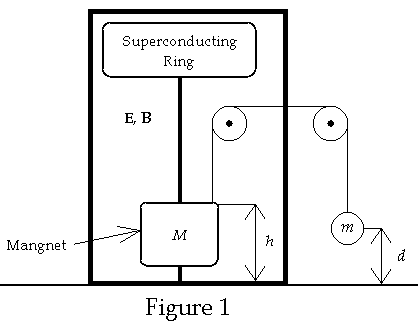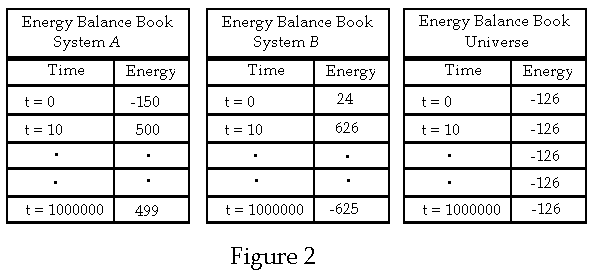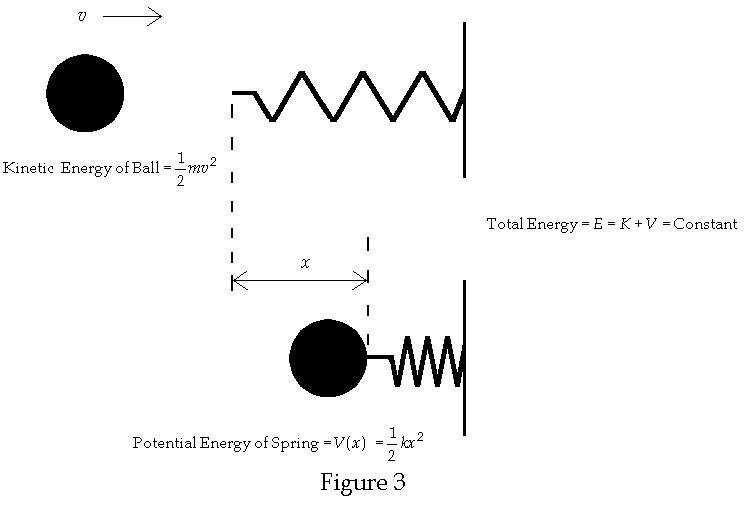
Back
to Physics World
Back to Classical Mechanics
Questions which begin with “What is …” are often the most difficult to answer if they can be answered at all. For example; consider the question What is life? Anyone can readily state examples of things that are alive, i.e. forms of life, these examples do not tell us what life really is? And what are we really asking? Are we inquiring as to what things are common to all forms of life? Such uncertainty could lead to failures in attempts to discover life on Mars when we send automated equipment to search for it. In asking the question What is energy? we are in no better position to answer to answer this question than the question regarding life since all we readily know are forms of energy. However, that said, we do know some things about energy. We know that, whatever it is, the total amount of it must be constant. This is the Principle of Energy Conservation. This means that if there is a decrease in the amount of one form of energy there must be an increase by the same exact amount in another form of energy. Obvious from this description is that the total amount can be any arbitrary number since only changes to the total are observable. Therefore energy is meaningful only as a simple bookkeeping device. As Richard Feynman put it [1]
It is important to realize that in physics today, we have no knowledge of what energy is. We do not have a picture that energy comes in little blobs of a definite amount. It is not that way. However, there are formulas for calculating some numerical quantity, and that when we add it all together it gives "28" - always the same number. It is an abstract thing in that it does not tells us the mechanism or the reasons for the various forces.
A.P.
French had the following to say about energy [2]
Of
all the physical concepts, that of energy is perhaps the most far reaching.
Everyone, whether a scientist or not, has an awareness of what energy means.
Energy is what we have to pay for in order to get things done. The word itself
may remain in the background, but we recognize that each gallon of gasoline,
each Btu of heating gas, each kilowatt-hour of electricity, each car battery,
each calorie of food value, represents, in one way or another, there wherewithal
for doing what we call work. We do not think in terms of paying for
force, or acceleration, or momentum. Energy is the universal currency
that exists in apparently countless denominations; and physical processes
represent as a conversion of one denomination to another.
The above marks
do not really define energy. No matter. It is worth recalling once more
the opinion that H.A. Kramers expressed: “The most important and most fruitful
concepts are those to which it is impossible to attach a well-defined
meaning.” The clue to the immense value of energy as a concept lies in its
transformation. It is conserved – That is the point. Although we may
not be able to define energy in general, that does not mean that it is only a
vague, qualitative idea. We have set up quantitative measures of various
specific kinds of energy: gravitational, electrical, magnetic, elastic,
kinetic, and so on. And whatever a situation has risen in which it seemed that
energy had disappeared, it has always been possible to recognize and define a
new form of energy that permits us to save the conservation law. And
conservation laws, …, represent one of the physicists most powerful tools for
analyzing his description of nature.
It will be helpful at this time to consider a specific example; Consider
two systems A and B. The charge density and current density is
zero everywhere inside system A which is surrounded by a thick iron wall.
System B is the external world. See
Figure 1

In order
to rearrange the charges in system A to establish a current in the ring
work must be done. If system B does this work then it is at the expense
of B’s energy tally. For the principle of energy conservation to hold
true the decrease in B’s energy bookkeeping must be by an amount which
is exactly the same as the increase in A’s energy tally. Since the only
thing of any physical significance is the changes in energy then we can set the
initial entry in the energy books of each system to anything we like. System B
will do work on system A by pulling up a magnetic from it’s lower
position to a higher position. As the magnet starts to rise there will be a time
varying electromagnetic (EM) field which will be confined within the iron walls.
The magnet will stop rising when counter weight, which is doing the work, hits
the ground. The magnet will then remain in the raised position. The rising
magnet will give rise to an increase increased magnetic flux which be
accompanied by a changing E field. This E field will cause a current to
flow within the superconducting ring. The magnet will eventually come to rest
when the body in system B hits the ground. The current will continue to
flow even when the magnet remains at rest. The amount of work done in creating
this magnetic field and raising the magnet is

where h
is the total distance traveled by the magnet. Eq. (1) is the sum of two terms.
We can identify the first term as magnetic energy, Uem and
the second term as mechanical energy, Umech.
The magnetic energy is the volume integral of a quantity, umech,
whose dimensions are “energy per unit volume.”
Therefore umag
is
referred to as the magnetic energy density. Since umag,
defined as
![]()
is a
function of r this quantity is often interpreted to mean that there is
energy at the r. This is a matter of convenience of thought.
All that is really at r is a magnetic field. The electric field
has a similar interpretation where the electric energy density is defined
as
![]()
Knowing
these energy densities allows us to evaluate integrals such as that in Eq. (1)
to find the total amount of work done on system A by system B.
This tells us how we should tally our energy bookkeeping. During the process of
raising the magnetic the total energy density was the sum of both the electric
and magnetic energy densities, which were functions of time, i.e.
![]()
When
we use this value our bookkeeping tally for system A reads
![]()
For
system B the bookkeeping tally reads
![]()
The
energy principle now reads
![]()
As a
general example of this type of bookkeeping is given in Figure 2

Some authors defined energy as the ability to do work. Such a definition is problematic. Consider Figure 3 below

This
diagram shows a ball originally moving with speed v towards a spring with
spring constant k. During the collision of the ball with the spring the
ball will slow down and the spring compresses. As the ball slows down it will
loose kinetic energy but increase its potential energy. The sum is called the
total mechanical energy of the system. Both the motion and the ball and the
compressed spring represents a potential to do work yet kinetic energy is
different than potential energy and neither of these quantities is conserved. It
is the sum of these energies, which is conserved. For this reason such a
definition as "The ability to do work." is poor as a definition. It
serves only to describe a property of energy.
Notice
how the energy moves back and forth from system to system yet the total energy
of the universe remains constant. Using the energy-density notion above we can
imagine this as an energy flux which is defined as energy per unit
volume per unit time.
How seriously must we take the physical existence of this energy? No more
and no less than any other bookkeeping practices. The physical quantities are
those such as the EM field.
References:
[1]
The Feynman Lectures on Physics - Vol. I, Feynman, Leighton and Sands, Addison-Wesley
Pub. Co. Inc., page 4-2.
[2] Newtonian Mechanics, A.P. French, W.W. Norton & Co.,
(1971), page 367.